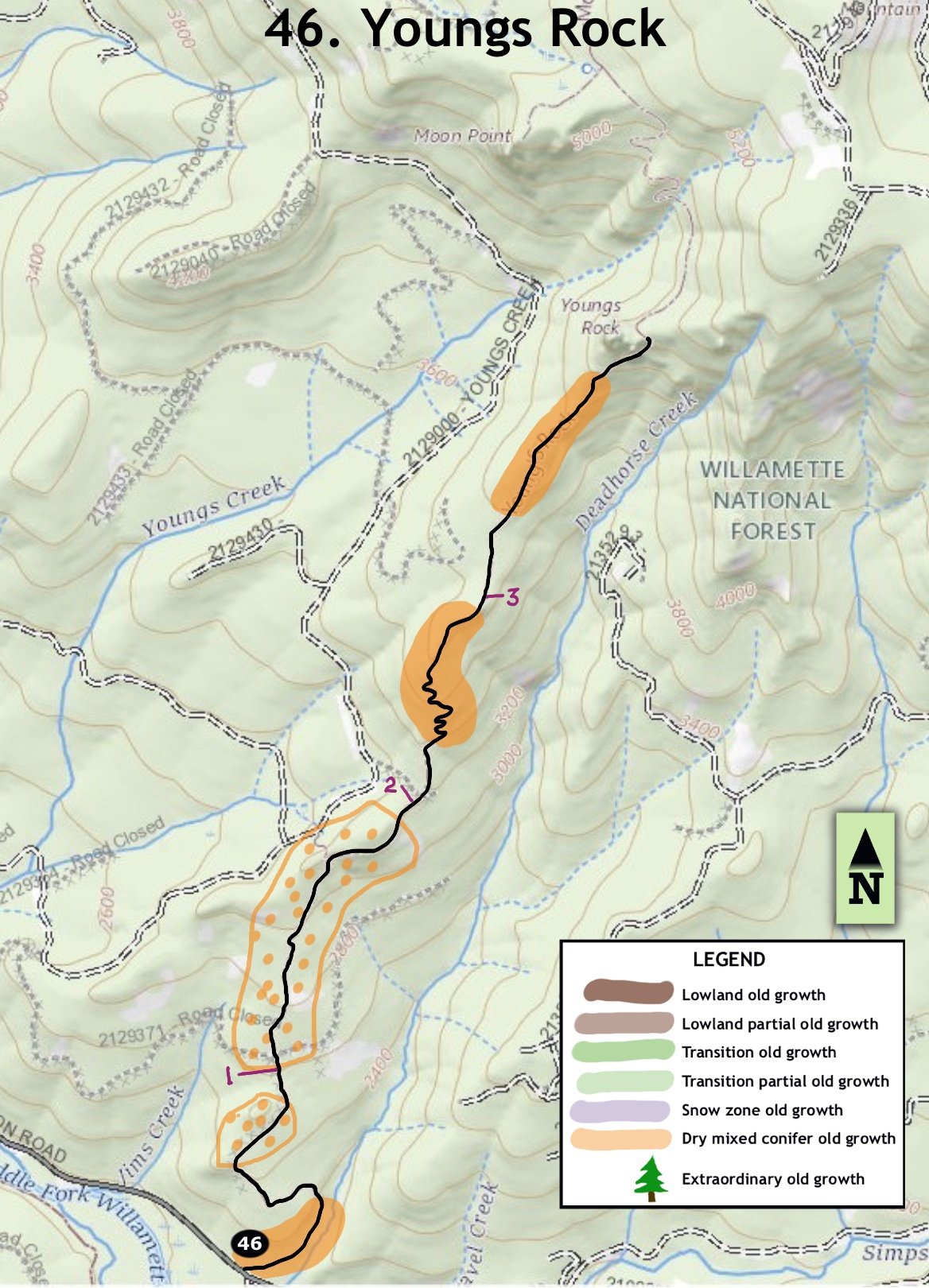
46. Youngs Rock
Summary
Length – 4 miles one way (alternative trailhead from the top adds two miles)
Difficulty – Moderate to difficult
Season – Spring to autumn
Elevation range –2,040 feet – 4,600 feet (5,180 feet if using alternative trailhead)
Human imprint – High (extensive cutting and burning restoration work; deeply eroded trail in places)
Information - Willamette National Forest, Middle Fork Ranger District
Primary old growth features
Old ponderosa pine near the northern limit of its range in the western Cascades; nice stand of old Douglas-fir and grand fir along upper segment; instructive example of restoration work in the dry, mixed-conifer forest type.
Description
The Youngs Rock Trail (3685) travels through the northernmost large stand of ponderosa pine in the western Cascades. With a squint of the eye, the effects of three distinct eras of human use and suppression of fire are evident along the trail. This can be a great early-season hike, often open earlier than other hikes at similar elevations. An alternative trailhead offers access from the top including a short spur trail to Moon Point for wide-ranging views. Watch out for mountain bikes along the steep trail sections.
The dry, mixed-conifer forest type visible along this hike differs from most of the Willamette National Forest and is more typical of forests found to our south and east. Historically, frequent low-severity fires kept stands like this in a relatively open condition while doing little damage to the thick-barked elders overlooking the stand. Historical fires in this area are thought to have been both lightning-started, and ignited by indigenous tribes to maintain open and savannah-like conditions for cultural uses.
Unfortunately, stands exhibiting these traits are not present today due to a century of fire suppression. The absence of fire in this second era led to an atypically dense understory of mostly Douglas-fir putting the old trees and the ecosystem at risk. Some species typical of this area, such as California fescue and Oregon white oak, are being shaded out while the old pines are dying and not being replaced.
The third era represents an attempt by forest managers to restore fire as a way to maintain the more open conditions historically present. A century of fire suppression has created major challenges, however, and historical conditions cannot be created overnight. Logging the smaller trees was seen as a way to reduce stress on the older trees, create growing space for more open-grown species, and to create safe conditions for the restoration of fire. Although still early, results at this point appear quite variable and will require targeted restoration planting and continued regular burning to achieve these goals.
All of this is visible as you head up the trail towards Youngs Rock, one of two impressive rock outcrops bookending the headwaters of Youngs Creek. The trail briefly veers into an untreated area where a dense understory of smaller trees crowds scattered pines, then turns up through the restoration unit for most of the next two miles. Conditions are quite varied as you traverse older cutting units, small flowery meadows, a 1996 wildfire, and newer restoration work. The density of older trees varies quite a bit with an occasional sugar pine mixing in with the dominant ponderosa pine, Douglas-fir and incense cedar.
The trail leaves the restoration unit and continues uphill through forest typical of the suppression era. Scattered large pines, Douglas-firs and incense cedar preside over a dense canopy of smaller trees. Continue up to the foot of Youngs Rock at about 4 miles, an interesting and worthy destination, although the entire outcrop can’t be viewed from the trail near the rock. Switchback corners are deeply eroded in places from mountain bike use.
Energetic hikers can continue past Youngs Rock through a headwall bowl of attractive Douglas-fir and grand fir old growth towards Moon Point, site of an old fire lookout. Some of the larger, open-grown Douglas-fir near 6 feet in diameter and are over 600 years old. Turn left on the Moon Point Trail (3688) approximately 1 ¼ miles above Youngs Rock to reach Moon Point, a prominent rocky spire where Youngs Rock can finally be seen in its entirety. This point can also be reached more directly from the alternative, upper trailhead.
25 years of change
The restoration work described above is a major change; old pines have continued to die-out, though the remaining old trees in the restoration unit are much more visible now.
How to get there
Turn right (south) onto the Kitson Springs County Road towards Hills Creek Dam less than 1 mile southeast of Oakridge. Turn right again a half mile later onto FR 21, and follow it around the west side of the reservoir. Trailhead parking is on the right just past Campers Flat Campground approximately 20 miles from SR 58.
To reach the upper trailhead, turn left onto FR 2129 approximately 18 miles from SR 58, and turn right onto FR 439 about 8 miles later, following the signs for the Warner Mountain Lookout. The trailhead is on the right side of FR 439 about 1 ½ miles from the FR 2129 junction.

Old survivors in dense forest

Fire scars on ponderosa pine
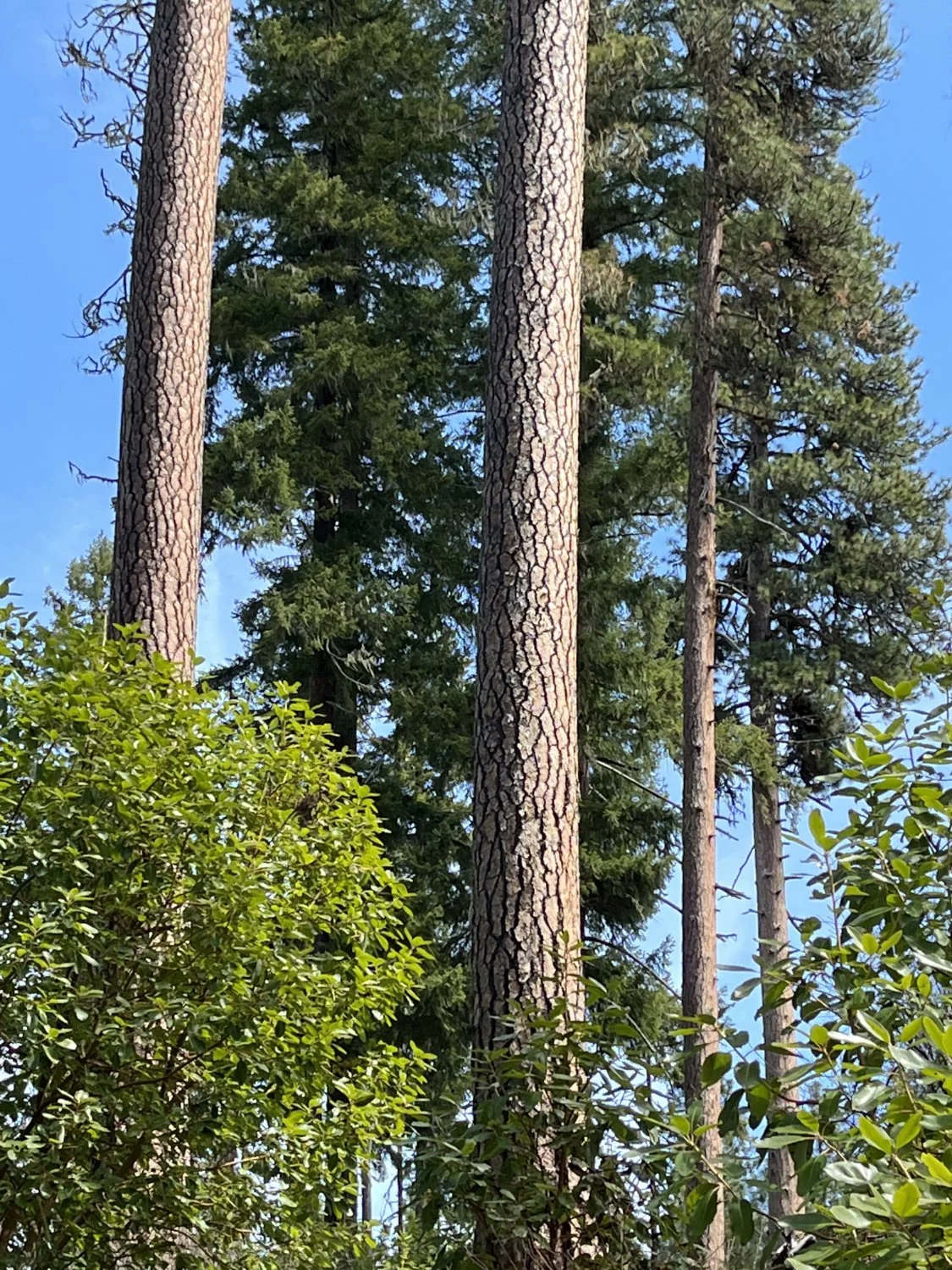
Beautiful pines

Trio of pines

Oregon White Oak

Youngs Rock
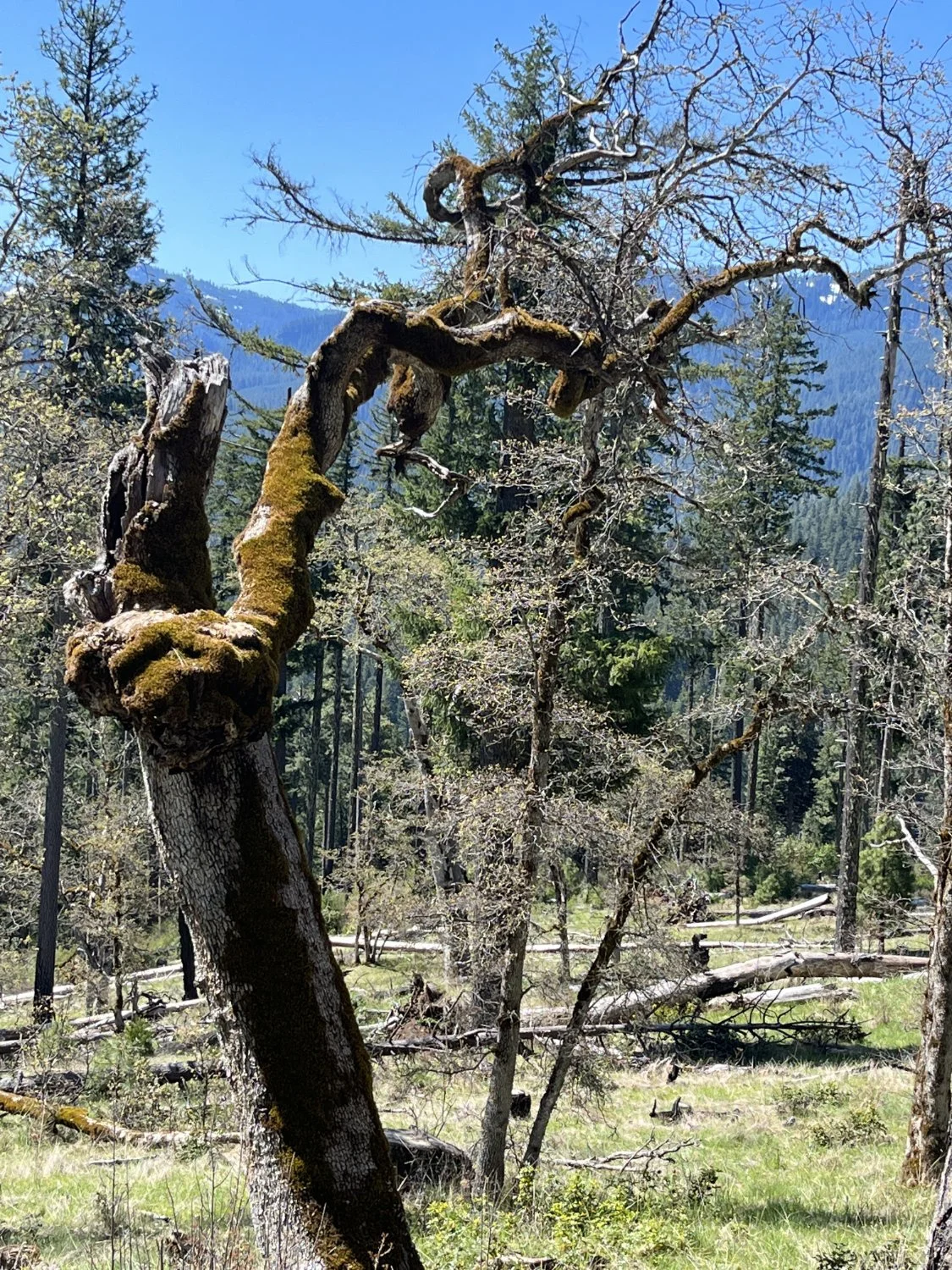
Gnarly oak

Incense cedars

Big pine, fire and bunchgrass

Presumed indigenous cultural fire scar

Post restoration

Deerbrush

Beware, poison oak

Mountain bike erosion

Madrone
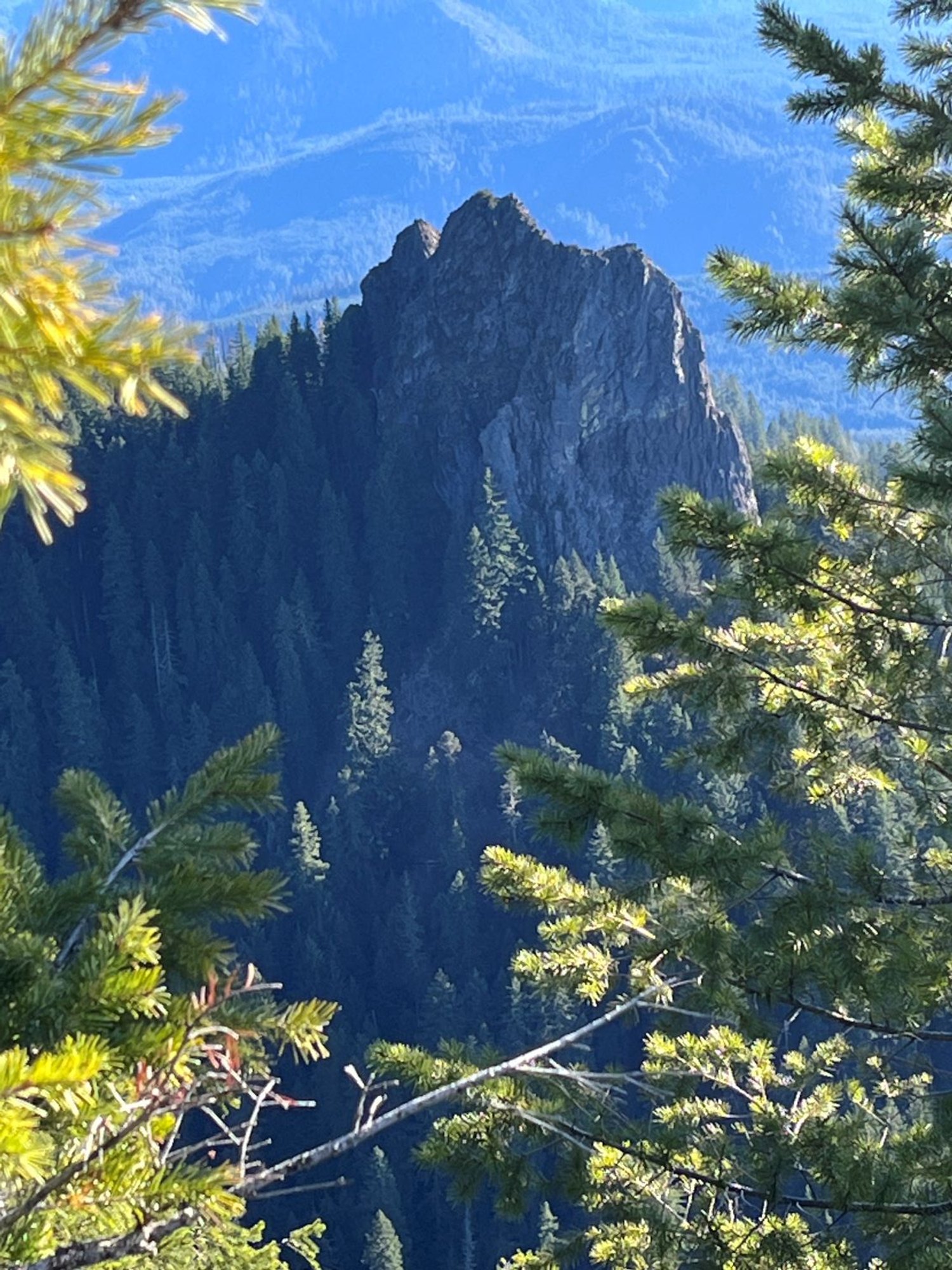
Youngs Rock from Moon Point
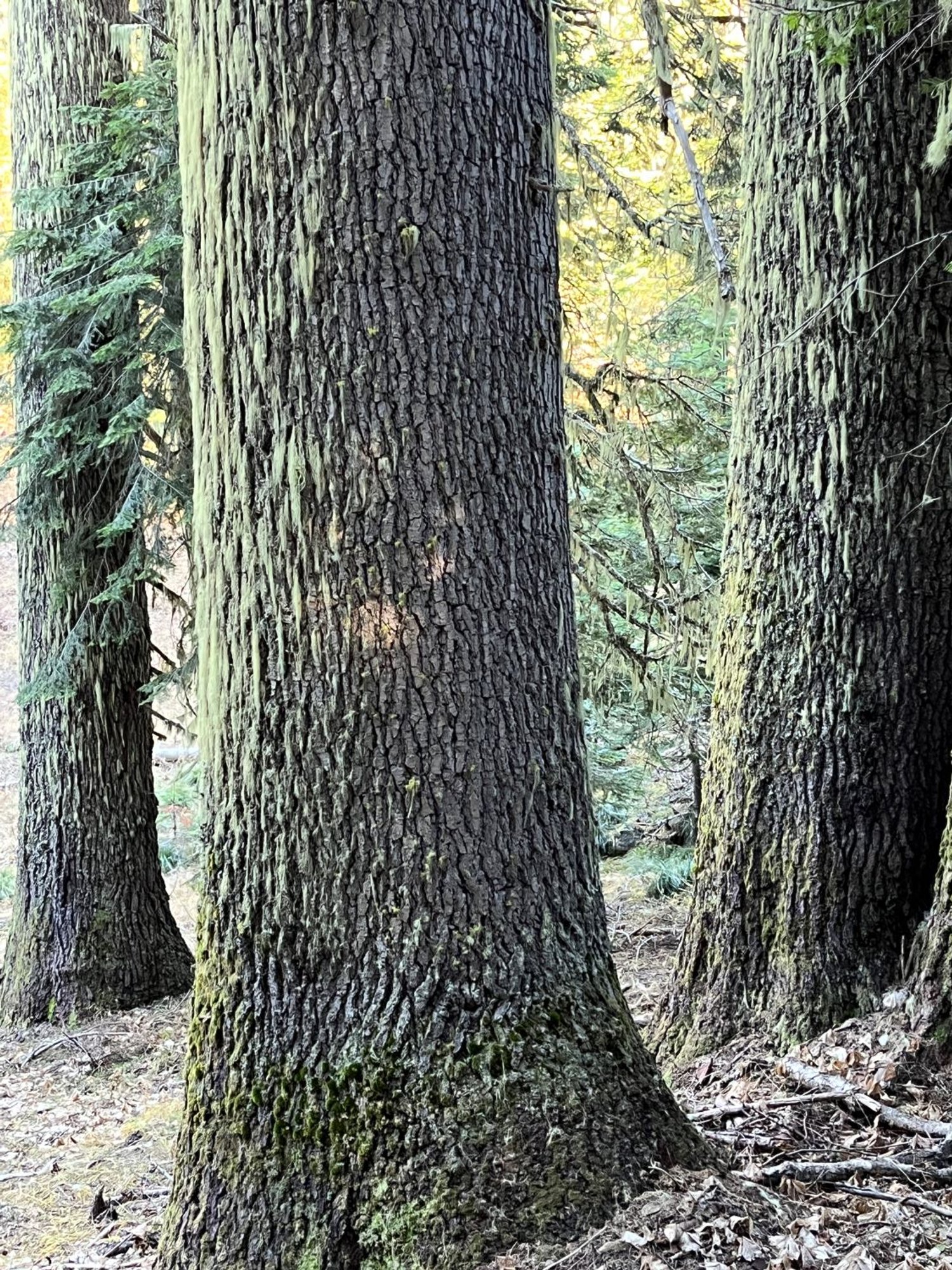
Grove of big noble fir

Huge Douglas-fir above Youngs Rock

Douglas-fir with fire scorch
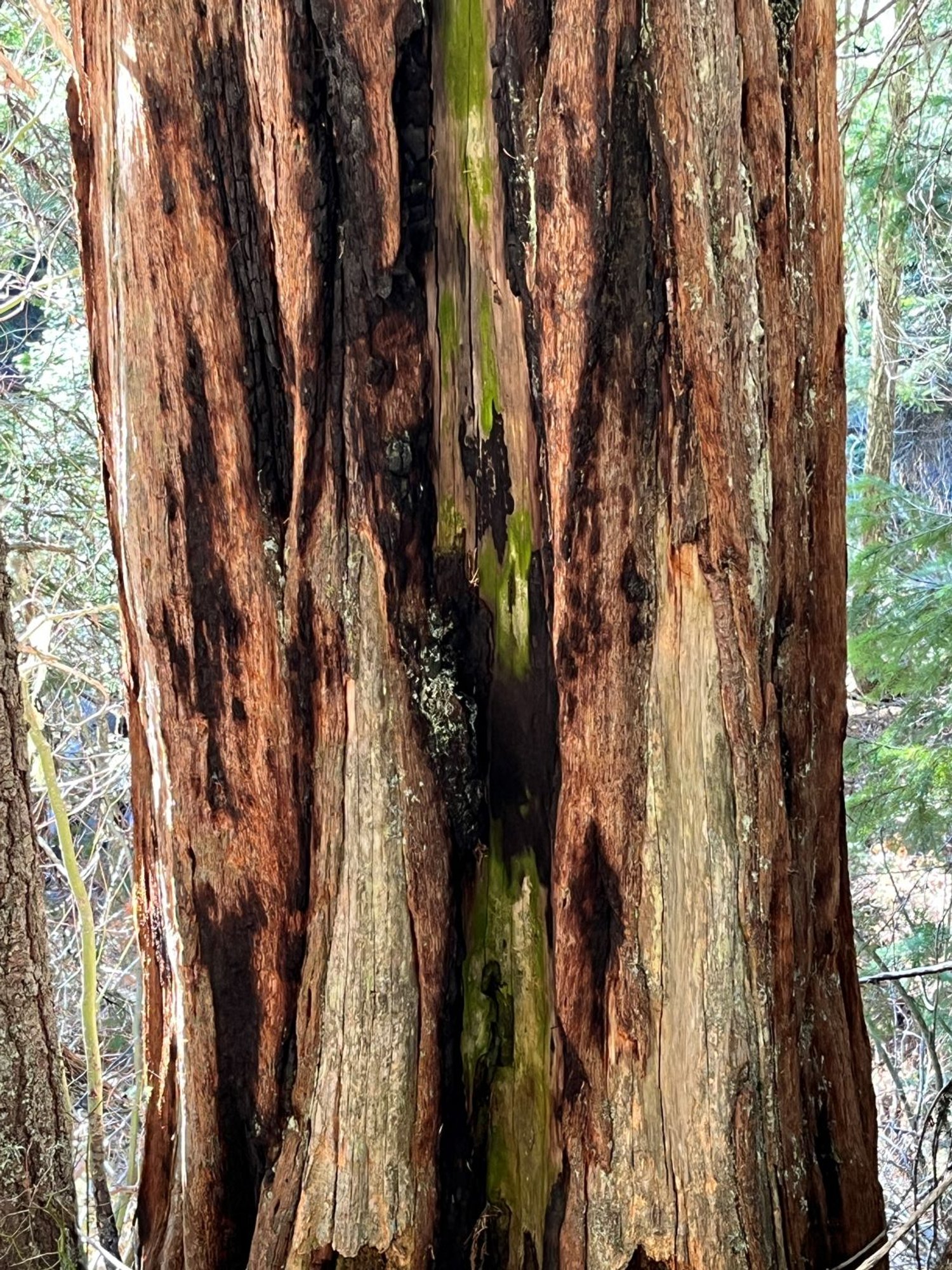
Colorful incense cedar
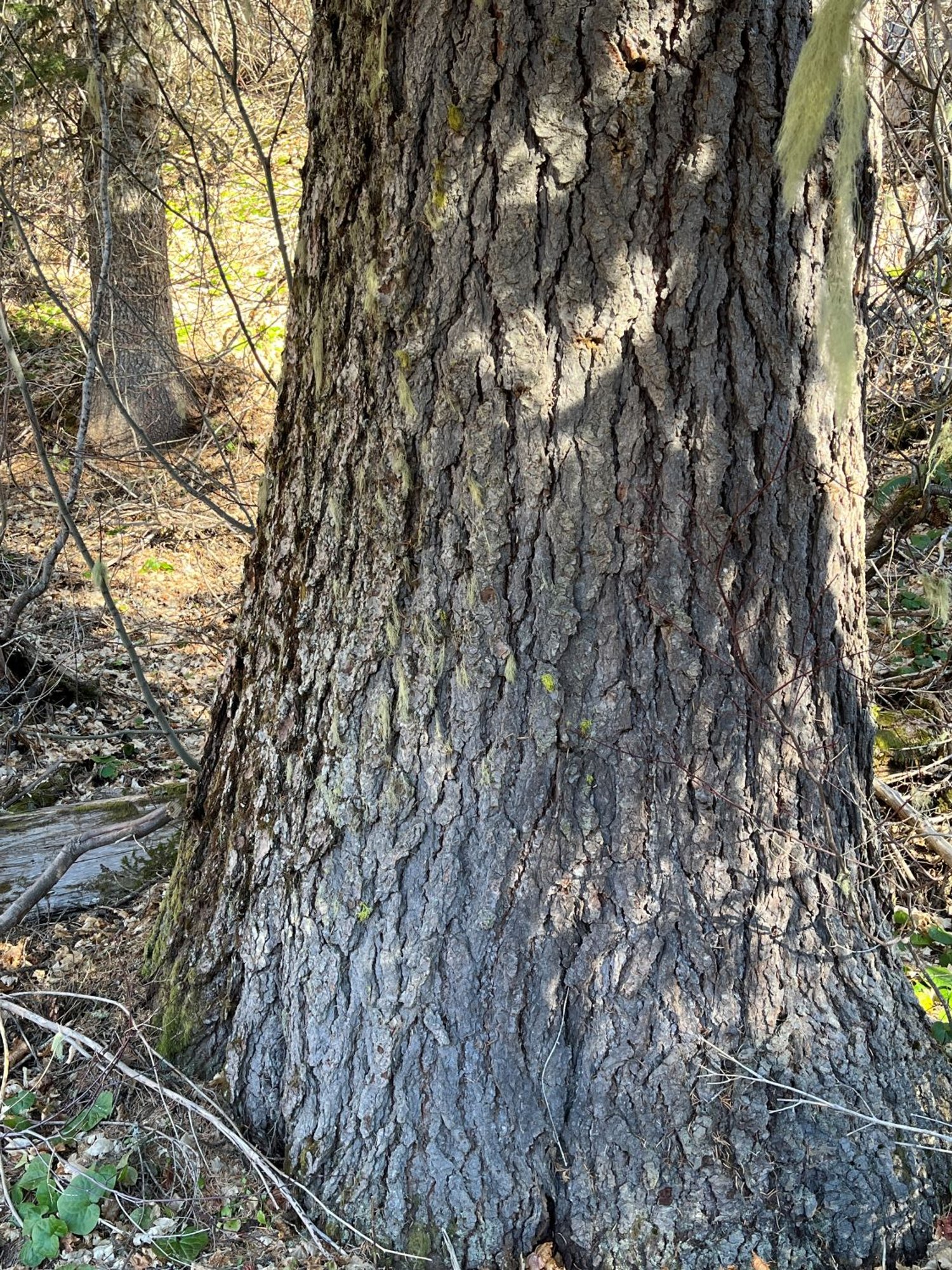
Old grand fir




